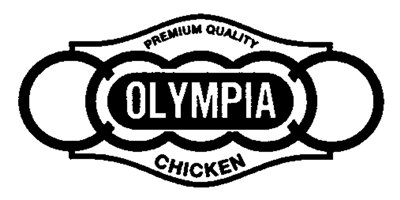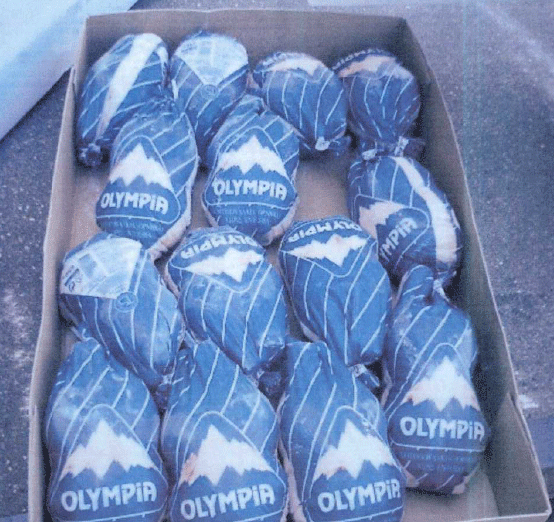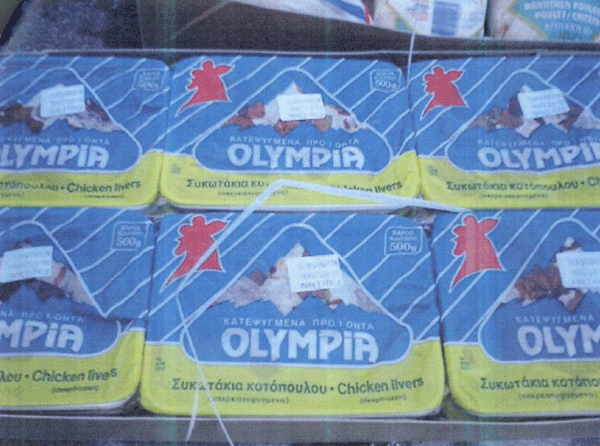Voor zover van die verplichting niet al ontheven
Rechtbank Utrecht, 3 september 2008, LJN: BE9612, Ferdinand Zandbergen B.V. tegen Jan Zandbergen B.V.
Eerst even voor jezelf lezen. Inbreuk Handelsnaam, ontheffing veroordeling ADR-procedure bij arbitragehof te Praag mbt EU-domeinnaam (Zie ook Gerechtshof Amsterdam, 3 juni 2008, IEF 7018)
“4.10. Resteert de vraag of Ferdinand Zandbergen B.V. moet worden ontheven van haar verplichting tot overdracht van de domeinnaam zandbergen.eu aan Jan Zandbergen B.V. De rechtbank is in beginsel van oordeel dat Ferdinand Zandbergen B.V. uit die verplichting al is ontheven. In artikel 22 lid 13 van de verordening (EG) 874/2004 is immers bepaald dat de resultaten van de ADR bindend zijn voor partijen en het register, tenzij binnen dertig kalenderdagen na de kennisgeving van het resultaat van de ADR-procedure aan partijen een gerechtelijke procedure wordt ingeleid. Nu Ferdinand Zandbergen B.V. binnen deze gestelde termijn na kennisgeving van de beslissing van het Arbitragehof van 2 september 2007 de onderhavige procedure heeft ingeleid, is de beslissing van het Arbitragehof tot overdracht van de domeinnaam niet meer bindend tussen partijen. Reeds daardoor is Ferdinand Zandbergen B.V. uit de verplichting tot overdracht ontheven. Een afzonderlijke gerechtelijke uitspraak lijkt daar dus niet voor nodig te zijn.
Artikel B 12 (a) van de Voorschriften ADR, waarnaar het Arbitragehof in haar uitspraak verwijst, is echter niet gelijkluidend aan het genoemde artikel 22 lid 13 van de verordening (EG) 874/2004. In artikel B 12 (a) is immers bepaald dat de uitspraak van de arbiters bindend is, onverminderd het recht van partijen om een gerechtelijke procedure te starten. Met het oog op dit verschil in de formulering van voornoemde artikelen zal de rechtbank Ferdinand Zandbergen B.V. van zijn verplichting tot overdracht van de domeinnaam zandbergen.eu ontheffen, voor zover zij daar niet al van is ontheven op grond van het bepaalde in artikel 22 lid 13 van de Verordening (EG) 874/2004. Dat Ferdinand Zandbergen B.V. de domeinnaam niet aan Jan Zandbergen B.V. hoeft over te dragen brengt geen verandering in het onder 4.4. gegeven oordeel dat de ten name van Ferdinand Zandbergen B.V. geregistreerde domeinnaam zandbergen.eu moet worden ingetrokken.
(…) De rechtbank verklaart voor recht dat noch Ferdinand Zandbergen B.V. noch Jan Zandbergen B.V. de domeinnaam zandbergen.eu toekomt, ontheft Ferdinand Zandbergen B.V. van de verplichting opgelegd bij beslissing van het Arbitragehof te Praag, verzonden op 5 september 2007, tot overdracht van de domeinnaam zandbergen.eu aan Jan Zandbergen B.V., voor zover Ferdinand Zandbergen B.V. van die verplichting niet al is ontheven op grond van het bepaalde in artikel 22 lid 13 van de Verordening (EG) 874/2004, compenseert de
Lees het vonnis hier.
Een heikel avontuur
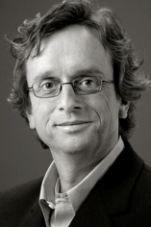 Dick van Engelen, Ventoux: Zekerheidsrechten op intellectuele-eigendomsrechten een heikel avontuur. Gepubliceerd in Maandblad voor Vermogensrecht (MvV) juli/augustus 2008, nr. 7/8
Dick van Engelen, Ventoux: Zekerheidsrechten op intellectuele-eigendomsrechten een heikel avontuur. Gepubliceerd in Maandblad voor Vermogensrecht (MvV) juli/augustus 2008, nr. 7/8
“Het vestigen van een zekerheidsrecht op alle IE-rechten van een rechthebbende – lock, stock & barrel – is dus naar Nederlands vermogensrecht een onmogelijkheid. Wanneer men zich realiseert dat een financier met een zekerheidsrecht vooral controle over de vermogenswaarde van bepaalde activa – zoals een onderneming, een uitvinding of merk, dan wel een octrooi-, merken- of auteursrechtportefeuille – wil, dan bewijst het Nederlandse vermogensrecht de praktijk hier een slechte dienst.
Gedupeerde is met name de rechthebbende zelf, die deze vermogensbestanddelen niet op eenzelfde simpele wijze als zijn andere vermogensbestanddelen, zoals onroerend goed, handelsvoorraden of -vorderingen, als zekerheid voor financieringen kan aanwenden. Zeker wanneer IE-rechten het enige actief zijn, zoals bij een start-up biotechnologisch of IT-bedrijf, wordt het aldus voor dergelijke ondernemingen nodeloos moeilijker om hun vermogen optimaal te benutten. Als we innovatieve ondernemingen willen stimuleren en faciliteren, is dit regime dus een duidelijke handicap, waarmee Nederland zich als mogelijk vestigingsland voor dergelijke ondernemingen binnen Europa in negatieve zin onderscheidt. Tegelijkertijd een onderwerp waar het in 2003 opgerichte Innovatieplatform, dat ten doel heeft Nederland tot de internationale top 5 te laten behoren op het gebied van innovatie,15 vrij simpel een praktisch resultaat zou kunnen behalen.”
Lees het artikel hier.
Niet meer het misleidend karakter
Vzr. Rechtbank ’s-Gravenhage, 4 september 2008, KG ZA 08-1072, Nestlé Nederland B.V. tegen Nutricia Nederland B.V. (met dank aan Kriek Wille, Klos Morel Vos & Schaap).
Reclamerecht. Gezondheidsclaims. Executiegeschil over de vraag of Nestlé dwangsommen is verschuldigd door haar uitingen op verpakkingen en website te wijzigen in die zin dat het woord 'aanbevolen' is vervangen door 'is' en 'is geschikt’(‘voeding is aan te bevelen voor alle baby’s’ door ‘is een hypoallergene opvolgmelk voor alle gezonde, flesgevoede kindjes van 6 maanden en ouder’ en ‘is geschikt voor alle gezonde, flesgevoede kindjes van 6 maanden en ouder. De voorzieningenrecht oordeelt dat het eerdere verbod niet zo ruim moet worden uitgelegd dat deze gewijzigde formulering eronder zou vallen.
3.3. (…) Een redelijke uitleg van de veroordeling brengt, naar voorlopig oordeel, mee dat de uiting van Nestlé misleidend is aangezien rij daarin de zinsnede 'aan te bevelen' hanteert. Daarbij is als toetsingsmaatstaf de intelligentie en het voorstellingsvermogen van het gemiddelde publiek gehanteerd en is uitdrukkelijk rekening gehouden met het feit dat sprake is van een gezondheidsclaim en dat het hier om zuigelingenvoeding gaat. Anders dan Nutricia meent heeft de rechtbank, naar voorlopig oordeel van de voorzieningenrechter, niet bedoeld te overwegen dat ook het hanteren van de zinsnede 'alle baby's' verboden is. De rechtbank Amsterdam overweegt weliswaar dat de claim misleidend is aangezien Nestlé door de desbetreffende uiting de indruk wekt dat hypoallergene producten beter zijn voor kinderen zonder verhoogd risico op allergieën dan niet-hypoallergene voeding, maar de rechtbank Amsterdam acht dit, voorshands oordelend, enkel misleidend aangezien Nestlé dit in combinatie met de zinsnede 'aan te bevelen' hanteert. Daarmee suggereert Nestlé immers dat een gezaghebbende instantie hypoallergene voeding aanbeveelt (ook) voor kinderen zonder allergieën. Door de zinsnede 'aan te bevelen' te vervangen door 'is' en 'is geschikt' moet de uiting, naar voorlopig oordeel, geacht worden niet meer het misleidend karakter te hebben, doch louter een omschrijving door Nestlé van het product en voor wie zij het product geschikt acht.
Lees het vonnis hier. Vonnis Rb. Amsterdam 23 april 2008 hier.
De praktische uitwerking van de regel
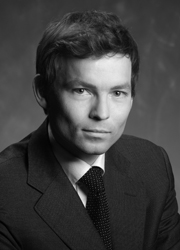 Daan de Lange, Brinkhof: Wat moet de Nederlandse octrooirechter doen bij een GAT/LuK verweer? Gepubliceerd in BIE 6/7, 18 augustus 2008, p. 231 – 233.
Daan de Lange, Brinkhof: Wat moet de Nederlandse octrooirechter doen bij een GAT/LuK verweer? Gepubliceerd in BIE 6/7, 18 augustus 2008, p. 231 – 233.
Het arrest van het Hof van Justitie (HvJ) in de zaak GAT/LuK heeft ruime aandacht gekregen . Een onderwerp van discussie was met name de vraag naar de praktische uitwerking van de regel die het HvJ formuleerde. Wat moet een rechter die wordt aangezocht te oordelen over inbreuk op een buitenlands (deel van een Europees) octrooi doen wanneer de vermeende inbreukmaker de geldigheid van het ingeroepen buitenlandse octrooirecht betwist (een ‘GAT/LuK verweer’)?
Op 30 november 2007 heeft de Hoge Raad in Roche/Primus II een toepassing gegeven aan het oordeel van het HvJ in GAT/LuK. De rechtbank ’s-Gravenhage heeft in zijn vonnis van 27 februari jl. in de zaak Bettacare/H3 II , aan deze uitleg van de Hoge Raad een uitwerking gegeven. Die uitwerking heeft de rechtbank ’s-Gravenhage recentelijk, bij vonnis van 18 juni jl. in de zaak Fort Vale/Pelican en bij vonnis van 16 juli jl. in de zaak Bettacare/H3 III bevestigd. Reden om de uitspraken van de Hoge Raad en de rechtbank kort te bespreken. Voor een goed begrip daarvan is het nuttig eerst de GAT/LuK beslissing van het HvJ kort in herinnering te roepen.
Lees het artikel hier.
Inmiddels zijn we 25 jaar verder
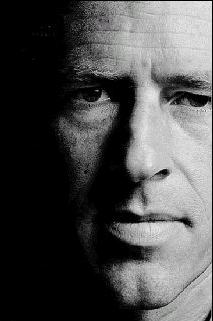 Prof. mr. P.B. Hugenholtz, IViR: Toegang tot de bron: het auteursrecht en het internet. Gepubliceerd in Ars Aequi, 2008-07/08, p. 581-588.
Prof. mr. P.B. Hugenholtz, IViR: Toegang tot de bron: het auteursrecht en het internet. Gepubliceerd in Ars Aequi, 2008-07/08, p. 581-588.
“Een minder vergaande oplossing die aan deze bezwaren tegemoet komt, zou zijn het afsluiten van collectieve licenties door organisaties van auteurs en rechthebbenden met de ISP’s die de massale inbreuk op het auteursrecht door hun abonnees al jaren oogluikend toestaan.20 Zo’n collectief contract zou niet zonder precedent zijn. In de jaren 80, toen het internet nog in de kinderschoenen stond, vormde de kabel de bron van alle auteursrechtelijke kwaad. Volgens de kabelexploitanten was het doorgeven van televisieprogramma’s een louter technische aangelegenheid, waar het auteursrecht buiten stond.
Inmiddels zijn we 25 jaar verder en is het betalen van vergoedingen voor de doorgifte van omroepprogramma’s via de kabel algemeen geaccepteerd. Als we aan de hand van het verleden de toekomst moeten voorspellen, ligt er voor het auteursrecht op het internet ook een happy end in het verschiet. Iedereen blij: de internetgebruikers, die tegen een kleine extra vergoeding onbeperkt mogen down- en uploaden; de auteurs en rechthebbenden, die eindelijk betaald krijgen; de rechterlijke macht, die niet langer met lastige handhavingsproblemen belast wordt; en de auteur van deze bijdrage, die het auteursrecht even belangrijk vindt als de informatievrijheid.”
Lees het artikel hier.
Juristen die van binnen en buiten mooi zijn
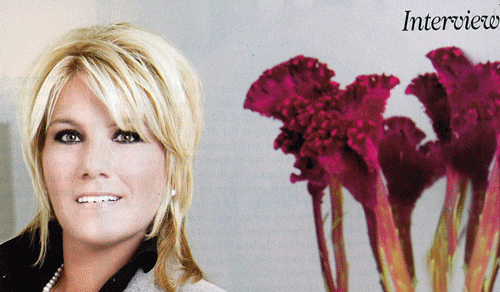 In de Beau Monde van deze week: Interview met “Powervrouw Christine Noordzij”. Over het leven en de ambities van waarschijnlijk de meest glamoureuze merkengemachtigde van Nederland (visagie van Leco van Zadelhoff). Interview is helaas niet elektronisch beschikbaar, maar wellicht dat de eerste, de middelste en de laatste alinea de lezer tot aanschaf van de Beau Monde kunnen overtuigen:
In de Beau Monde van deze week: Interview met “Powervrouw Christine Noordzij”. Over het leven en de ambities van waarschijnlijk de meest glamoureuze merkengemachtigde van Nederland (visagie van Leco van Zadelhoff). Interview is helaas niet elektronisch beschikbaar, maar wellicht dat de eerste, de middelste en de laatste alinea de lezer tot aanschaf van de Beau Monde kunnen overtuigen:
“Christine Noordzij, blond & hooggehakt, zwaait samen met compagnon Joop Elzas de scepter over het gerenommeerde merkenbureau Elzas Noordzjj. Onder haar clientèle bevinden zich grote bedrijven, maar ook bekende namen als Gerard Joling, John de mol en Mart Visser. Christine: “Ik neem alleen mensen aan die zowel van binnen als van buiten goodlooking zijn.”
(…) Het scheelt dat ik op de middelbare school en later op de universiteit, waar ik rechten studeerde, al affiniteit had met het merkenrecht. En dat het in mijn aard zit te organiseren en te regelen: ik doe graag tien dingen tegelijk. Daarnaast ben ik energiek en erg nieuwsgierig naar andere mensen. Wat beweegt ze, wat is hun passie? Inhoudelijke kennis van een zeer hoog niveau, passie en beschikken over een goed sociaal inlevingsvermogen is iets wat ze ook zoekt bij haar medewerkers. Christine: "Juristen die van binnen en buiten mooi zijn. Onze juristen worden veel uitgenodigd op partijen en recepties, dus moet iemand makkelijk kunnen converseren, er representatief uitzien en zich aan de dresscodes willen houden, zoals ‘gala’ of ‘cocktail’. Door de verschillende recepties, party’s, liefdadigheidsdiners en modeshows die Christine bezoekt, zien haar werkweken er nooit hetzelfde uit, al heeft ze wel bepaalde gewoontes.”
(…) “Gevraagd of geld gelukkig maakt, schudt Christine haar hoofd. “Succes in de liefde maakt gelukkig.”Een vastomlijnd plan van hoe haar zakelijke toekomst eruitziet, heeft ze niet. “We hebben niet de ambitie heel groot te worden, we willen de beste blijven in het vak en een overzichtelijk bedrijf houden met heldere en korte lijnen voor onze cliënten. Al zal het aantal medewerkers wel groeien, want het gaat goed met ons kantoor.”Zo goed dat zij en haar compagnon al twee keer benaderd zijn of ze hun bedrijf willen verkopen. Christine: “Dan zijn we natuurlijk zeer gevleid, maar we vinden ons werk nog zo leuk dat we ons bedrijf voorlopig niet weg doen. En als het moment daar is, in de verre toekomst, ga ik gewoon iets anders doen. Ik ben niet iemand die jong gaat rentenieren. Wat voor bedrijf precies? Geen idee. Hoe de wind waait, waait mijn rokje.”
Kinderen de dupe
 Hoge Raad, 5 september 2008, LJN: BD4746, De Stichting Hoop Voor Straat- En Zwerfkinderen tegen De Stichting Fonds Toekomst Voor Kinderen.
Hoge Raad, 5 september 2008, LJN: BD4746, De Stichting Hoop Voor Straat- En Zwerfkinderen tegen De Stichting Fonds Toekomst Voor Kinderen.
Handelsnaamrecht; rechtmatigheid gebruik gelijkende handelsnaam. Verkade & Hoge Raad concluderen dat de in het middel aangevoerde klachten niet tot cassatie kunnen leiden. (81 RO).
Conflict over de compatibiliteit van de namen: - enerzijds Stichting Hoop voor Straat- en Zwerfkinderen JUCONI, waarbij het gewicht van het woord JUCONI voor het hof doorslaggevend was, wat nu in cassatie wordt bestreden; - anderzijds Stichting Fonds van Hoop voor Kinderen: dat is niet langer de statutaire naam van Stichting Toekomst (die is nu immers: Stichting Fonds Toekomst voor Kinderen), maar de Stichting Toekomst wijst het verwijt van onrechtmatigheid van een naam met 'hoop voor kinderen' erin van de hand (al dan niet in verband met de schadeclaim van 'Stichting Hoop').
Het hof heeft - als feitenrechter - vastgesteld (IEF 3705) dat Stichting Hoop naar buiten toe veelal optreedt onder de naam 'Juconi', al dan niet met toevoeging van haar statutaire naam, en dat daarom niet sprake is van een zodanig verwarringsgevaar dat dit kan leiden tot het door Stichting Hoop gevraagde verbod. In dit oordeel ligt besloten dat het feitelijk voeren door de Stichting Hoop van haar statutaire naam in samenhang met de naam 'Juconi' zodanig overheersend is (boven het voeren van die statutaire naam zonder de naam 'Juconi'), dat verwarringsgevaar daarmee (zo goed als) uitgesloten is.
De in het middel aangevoerde klachten kunnen niet tot cassatie leiden. Zulks behoeft, gezien art. 81 RO, geen nadere motivering nu de klachten niet nopen tot beantwoording van rechtsvragen in het belang van de rechtseenheid of de rechtsontwikkeling.
Lees het arrest hier.
Het Bergmerk
(Klik op afbeeldingen voor vergoting) Eerst even voor jezelf lezen. Merkenrecht. Bodemprocedure (na eerder kort geding en verklaring ex art. 260 / 1019i RV). Niet alleen het IOC maakt bezwaar tegen het gebruik van de aanduiding als Olympia en afbeeldingen van ringen: Eiser Fraas is houder van Benelux-woordmerk OLYMPIA LUXUS HÄNCHEN, voor kipproducten, en maakt i.c. succesvol bezwaar tegen gebruik door gedaagde van OLYMPIA, OLYMPIA LUXUS HÄNCHEN en het ‘Bergmerk’ in de Benelux. Ook gebruik als exportmerk wordt verboden. Werkelijke proceskosten onvoldoende gespecificeerd: liquidatietarief. "5.10.3. De rechtbank is verder van oordeel dat het aannemelijk is dat de totaalindruk die het Luxus enPremium-merk en het "Bergmerk" op de gemiddelde consument maakt zodanig is, dat die consument een verband kan leggen tussen eerstgenoemde door Fraas gebruikte merken en het laatstgenoemde door Storteboom gebruikte teken. 5.10.4. Voor de rechtbank is doorslaggevend het feit dat in zowel de merken van Fraas als in hettekenvan Storteboom niet alleen op een dominante en maar ook op een qua vorm gelijke wijze gebruik wordt gemaakt van bet woord "olympia" door dat in hoofdletters prominent te plaatsen op de verpakking van door hen op de markt gebrachte producten, zijnde zoals hiervoor is overwogen soortgelijke waren. Opvallend is voorts dat op de sticker die op de doos waarin de kipproducten van Storteboom zijn verpakt enkel het woord “OLYMPIA” staat, derhalve zonder beeldmerkteken. |
5.10.5. Door het gebruiken van genoemd woord op de omschreven wijze en op grond van het feit dat het naar het oordeel van de rechtbank aanduiden van een kipproduct met het teken "OLYMPIA" toch niet als vanzelfsprekend kan worden aangemerkt, roept de totaalindruk van het merk en het teken bij de gemiddelde consument -zeker bij een niet ongebruikelijke vluchtige waarneming van producten- niet alleen een zodanige visuele maar ook, bij het uitspreken van het woord "olympia", een zodanige auditieve gelijkenis op dat die consument een verband kan leggen tussen de merken van Fraas en het door Storteboom gebruikte "Bergmerk".
5.10.6. Naar het oordeel van de rechtbank zal de gemiddelde consument wanneer hij tot aankoop van een "olympia-kip(produkt)" wil overgaan daarbij niet vermelden of het een product moet zijn met op de verpakking (ook) een samenstel van ringen of een met een afbeelding van een berg. De gemiddelde consument zal door de prominente vermelding van "OLYMPIA" op de verpakking van de onderhavige producten genoemde onderdelen (de ringen en de berg) eerder als "details"/"franjes" zien dan als een specifiek bestanddeel dat bepalend is voor de herkomst (identificatie) van het product.
5.10.7. Dat het woord "Olympia" door een derde in Griekenland als "trademark" is ingeschreven maakt, wat betreft de Griekse markt, het voorgaande niet anders nu het Storteboom is die door Fraas wordt aangesproken op het gebruik van het "Bergmerk" en vaststaat dat Storteboom dat teken ook op haar verpakkingen gebruikt.
Lees het vonnis hier.
Faits divers
Autoriteit nodig voor architecten. “Architecten weigeren zich langer te laten misbruiken door de overheid. Deze eist bij aanbestedingen het onmogelijke. Een nieuwe autoriteit is een oplossing, zegt Bjarne Mastenbroek. Architecten verzetten zich tegen de huidige selectie van ontwerpers van belangrijke openbare gebouwen.
Architectenbureau Atelier Kempe Thill heeft net in opdracht van het Stimuleringsfonds voor Architectuur de aanbestedingscultuur onder de loep genomen. De studie schept een ontluisterend beeld. Neem het auteursrecht. Zo is in Denemarken bij wet geregeld dat een architect zijn auteursrecht niet kan opgeven, maar in Nederland eisen veel opdrachtgevers nog vóór aanvang van de opdracht het auteursrecht op. De gemeente Amsterdam heeft dit zelfs standaard in haar contract staan. Schandalig, want zonder auteursrechtelijke bescherming is een architect vogelvrij.”
Lees hier meer (NRC).
Recidiverende piraat. “De 47-jarige Van D. uit het Gelderse Culemborg is op 25 augustus 2008 door de politierechter tot een onvoorwaardelijke werkstraf van 120 uur en een voorwaardelijke gevangenisstraf van 12 weken met een proeftijd van 2 jaar veroordeeld. Zowel de Politie als BREIN ontvingen in het verleden herhaaldelijk informatie dat Van D. op grote schaal illegale kopieën van cd's en dvd's met films en muziek zou vervaardigen en verspreiden.
Van D. is al twee keer eerder veroordeeld tot geldboetes en taakstraffen voor de handel in illegale dragers. “Deze keer moet de voorwaardelijke gevangenisstraf hem op het rechte pad houden”, zegt BREIN directeur Tim Kuik. “Anders is het drie keer scheepsrecht en draait hij de cel in.”
Lees hier meer (BREIN).
Gebruiksvoorwaarden. “Google heeft een gedeelte van de gebruikersovereenkomst van Chrome aangepast. Het gaf de zoekmachine verregaande rechten op alles wat zijn gebruikers invoeren bij de zoekmachine. Belangengroepering EFF maakt zich daarnaast grote zorgen over het gedrag van slimme zoekbalk Omnibox.
Voor de aanpassing van de zogenoemde ‘EULA’ van kracht werd, vertelde Google Chrome vóór installatie dat “door het invullen of weergeven van inhoud u Google het recht geeft op een eeuwige, onomkeerbare, wereldwijde, royaltyvrije en non-exclusieve licentie om te reproduceren, aanpassen, wijzigen, vertalen, publiceren, publiekelijk uitvoeren en weergeven en distribueren van elk materiaal dat u toevoegt, plaatst of weergeeft op of door onze diensten.”
Lees hier meer (Zdnet).
Nog geen grote vormen heeft aangenomen? “Auteursrechtenorganisatie Buma/Stemra heeft tenminste vier illegale aanbieders van nummers van de laatste CD van Marco Borsato van het internet laten verwijderen. (...) DTwee piraten trokken zich vrijwillig terug nadat de Buma hen had gesommeerd een overeenkomst over de auteursrechten te sluiten. De andere illegale Borsato-sites zijn door de betrokken (buitenlandse) providers van het wereldwijde web verwijderd. Hoewel het illegaal aanbieden van muziek via het internet nog geen grote vormen heeft aangenomen, blijft Buma/Stemra alert.”
Lees hier meer (Webwereld).
Leefregels onbedoeld plagiaat. “Bij universiteiten en hogescholen is behoefte aan duidelijkheid rond het onderwerp plagiaat. (...) Het is niet altijd duidelijk of er sprake is van kwaadwillig plagiaat, slechte bronvermelding of zelfs geoorloofd gebruik van andermans materiaal. SURFdirect, de digitale rechten community van SURF, gelooft meer in het voorkómen van plagiaat dan het bestrijden ervan. Zij heeft leefregels voor het geoorloofd hergebruik van materiaal opgesteld om met voorlichting over correct citeren en hergebruik duidelijkheid te scheppen.”
Lees hier meer (Surf).
Exquisite Legging
Vzr. Rechtbank ´s-Gravenhage, 4 september 2008, KG ZA 08-633, Bonnie Doon Europe B.V. tegen Angro Hosiery B.V. c.s. (met dank aan Lars Bakers en Gitta van der Meer, Leidsegracht Advocaten).
Eerst even voor jezelf lezen. Ongeregistreerd gemeenschapsmodel legging, ontlening. Indictietarieven IE: eenvoudige zaak: E.15.000,-
“Nu per 1 september 2008 de functie van procureur is vervallen, zijn in de kop van dit vonnis, bij gebreke van het indienen van een B-formulier (wijziging advocaat) op de voet van artikel 7.3. van het landelijk rolreglement, de bij de rechtbank geregistreerde voormalige procureurs aangemerkt als behandeld advocaat. Tot 1 september 2008 is voor Bonnie Doon mw. mr. G.H. van der Meer, advocaat te Amsterdam opgetreden en voor Angro rnr. A.A.H.M. van der Wijst, advocaat te Boxtel.
5.7. Het verweer dat een presentatie in de showroom van Bonnie Doon waarbij de Exquisite Legging aan een selecte groep afnemers wordt getoond niet kan worden aangemerkt als aan het publiek beschikbaar stellen in de zin van artikel 11 GModVo, wordt verworpen. Die presentatie heeft immers, gelet ook op de hiervoor genoemde bestellingen, onmiskenbaar tot doel gehad het ter verkoop aanbieden van de Exquisite Legging, een handeling die kwalificeert als het n de handel brengen van het betrokken model aan ingewijden in de sector als bedoeld in artikel 11 GModVo. Voor zover uit de stellingen van Angro in dit verband voorts nog moet worden begrepen dat zij stelt dat het tonen van ontwerptekeningen / afbeeldingen niet kan worden aangemerkt als het beschikbaar stellen aan het publiek, wordt Angro daarin niet gevolgd omdat dit niet anders is dan het afbeelden van een tweedimensionaal model in een publicatie zoals een catalogus, een handeling waarvan Angro in ieder geval vindt dat dat een beschikbaarstelling is. De toets is uiteindelijk of de ingewijden in de betrokken sector kennis hebben kunnen nemen van het model, hetgeen in deze zaak voorshands bevestigend wordt beantwoord.
(…) 5.9. Nu Bonnie Doon naar voorlopig oordeel haar Exquisite Legging als eerste aan het publiek beschikbaar heeft gesteld, wordt voldaan aan het nieuwheidsvereiste van artikel 5 GModVo. Tussen partijen is verder niet in geschil dat de Exquisite Legging, ervan uitgaande dat deze voor het eerst aan het publiek beschikbaar is gesteld, een eigen karakter heeft in de zin van artikel 4 OModVo (vgl. pleitnota mr. Van der Wijst, positum 30), zodat de Exquisite Legging van Bonnie Doon voldoet aan de in artikel 4 GModVo genoemde beschermingsvoorwaarden. Dat betekent dat Bonnie Doon zich ut hoofde van haar niet-ingeschreven Gemeenschapsmodelrecht in beginsel kan verzetten tegen het gebruik daarvan door Angro, mits dat gebruik voortvloeit uit het namaken van het beschermde model.
5.10. Gelet op het feit dat de Exquisite Legging eerder dan de Angro Legging aan het publiek beschikbaar is gesteld en deze laatste legging een nagenoeg klakkeloze kopie betreft van de Exquisite Legging, wordt voorshands aangenomen dat van ontlening sprake is. Hetgeen Angro daartegen heeft ingebracht maakt dit niet anders (…)”
Lees het vonnis hier (inmiddels de doorzoekbare versie van de Rechtbank Den Haag).

